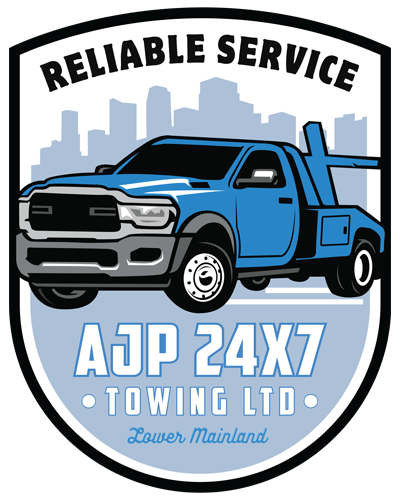Vehicle breakdowns are often as surprising as they are inconvenient. Whether you’re in the middle of nowhere or on your way to an important event, a flat tire or an engine malfunction can disrupt your day in a heartbeat. While it’s virtually impossible to prevent every breakdown scenario, there are practical steps you can take to minimize the risk and ensure you’re prepared if it does happen.
This post is for anyone who relies on a vehicle as their primary mode of transportation or recognizes the importance of vehicle maintenance to ensure safety and reliability. By implementing the five strategies laid out in this guide, you can hit the road with greater peace of mind, knowing that you’ve done your part in keeping auto emergencies to a minimum.
1. Regular Maintenance Checks
Neglecting regular vehicle maintenance is like playing Russian roulette with your engine. One of the most effective ways to prevent breakdowns is to stay on top of your car’s recommended maintenance schedule. This includes:
- Consistently changing the oil and oil filter.
- Checking and maintaining proper tire pressure and tread depth.
- Replacing the air filter when necessary.
- Checking and topping up all fluids, including anti-freeze, brake, transmission, and power steering fluids.
- Inspecting the battery for corrosion and ensuring secure connections.
A well-maintained vehicle is less likely to experience a breakdown and operates more efficiently, which can save you money on fuel and costly repairs in the long run. Here are a few maintenance-related tips to keep in mind:
- Regularly check your owner’s manual for the manufacturer’s recommended maintenance intervals.
- Make a habit of visually inspecting your vehicle weekly for any visible issues.
- Consider setting calendar reminders for important maintenance tasks.
Prioritizing these checks will help detect and address potential mechanical issues before they escalate into major problems on the road.
2. Pay Attention To Warning Lights
Modern vehicles are equipped with a plethora of sensors that monitor various systems. When a warning light pops up on your dashboard, it’s the car’s way of telling you that something is amiss. Common warning lights that you shouldn’t ignore include:
- Check Engine Light
- Battery Light
- Oil Pressure Light
- Brake Light
If any of these lights appear, it’s crucial to take your car to a mechanic as soon as possible for a diagnostic check. Ignoring these warnings can lead to catastrophic failures and possibly dangerous driving situations. Some of these issues, such as a loose gas cap or low tire pressure, can be minor, so it’s important to have them evaluated to determine the necessary steps for repair.
3. Keep an Emergency Kit in Your Vehicle
Being stuck on the side of the road can be unnerving, especially if it’s in the dead of winter or on a dark, deserted road at night. An emergency kit can be a lifesaver in these situations. Your kit should contain items such as:
- First-aid supplies
- Flashlight
- Reflective triangles or flares
- Jumper cables
- Tire sealant and inflator
- Multi-tool
- Blankets
- Bottled water and non-perishable snacks
Make sure your emergency kit is easily accessible and that you’re familiar with how to use each item. It’s also a good idea to periodically review and update your kit to ensure that all items are in good working condition and that the supplies haven’t expired.
4. Drive Smarter
Your driving habits play a significant role in the lifespan of your vehicle and the likelihood of a breakdown. Here are a few smart driving practices to keep in mind:
- Avoid aggressive driving, which can put unnecessary strain on your vehicle’s components.
- Accelerate and decelerate smoothly.
- Be mindful of your vehicle’s payload limits to avoid damage to the suspension, braking, and other systems.
- Adhere to the recommended speed limits and avoid driving on rough terrain if your vehicle is not designed for it.
- If you do drive in extreme weather conditions, adjust your driving for the conditions, whether it’s heavy rain, snow, or high heat.
Driving smarter not only reduces the chance of a breakdown but also can improve your fuel economy, saving you money and reducing your carbon footprint in the process.
5. Know When To Call a Professional
While many breakdowns can be addressed with a quick inspection and a little bit of know-how, some issues are best left to the professionals. If you experience any of the following, it’s time to call for assistance:
- A sudden loss of power or strange noises coming from the engine or transmission.
- A visible and immediate issue that is beyond your capability to fix safely, such as a serious fluid leak or a snapped belt.
- The vehicle becomes inoperable and you’re unable to diagnose or remedy the issue.
- In the case of an accident or if you feel unsafe attempting to diagnose the issue yourself.
Again, it’s important to have a reliable roadside assistance service or a towing service in your contacts. It’s better to be over-prepared than under-prepared when it comes to dealing with unexpected hiccups on your travels.
By following these five strategies for avoiding vehicle breakdowns, you can significantly reduce the chances of being marooned on the side of the road. Remember that your safety and the safety of others are paramount, and investing a little time and effort into maintaining your vehicle can make all the difference.

